NFT Generator AI: The New Level of Digital Art or Artistic Disgrace?
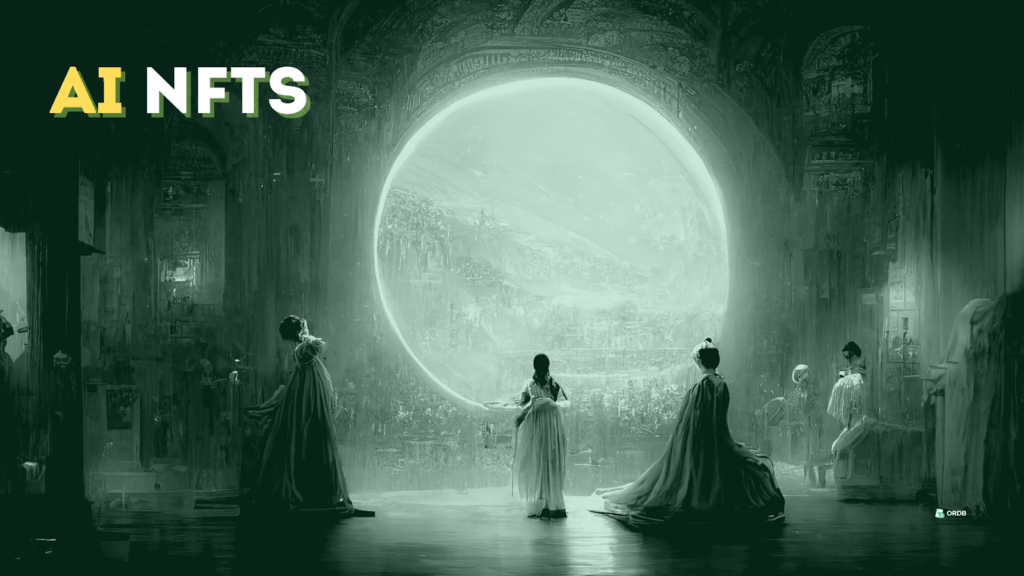
After a long crypto winter, the NFT market is finally recovering, and trading volumes are nearing peak levels. Given the bullish trend on the market, more and more people are willing to make money by selling digital collectibles.
With the widespread artificial intelligence adoption, producing NFT artworks has become easier than ever. AI-powered image generators can help you create beautiful pieces in just a few clicks.
The impressive potential of neural networks raises provocative questions:
If you’re curious about these questions, you’re in the right place. In this article, we’ll discuss what artificial intelligence NFT is, how ethical it is, and how to earn on AI-produced digital art.
AI NFT Art Explained
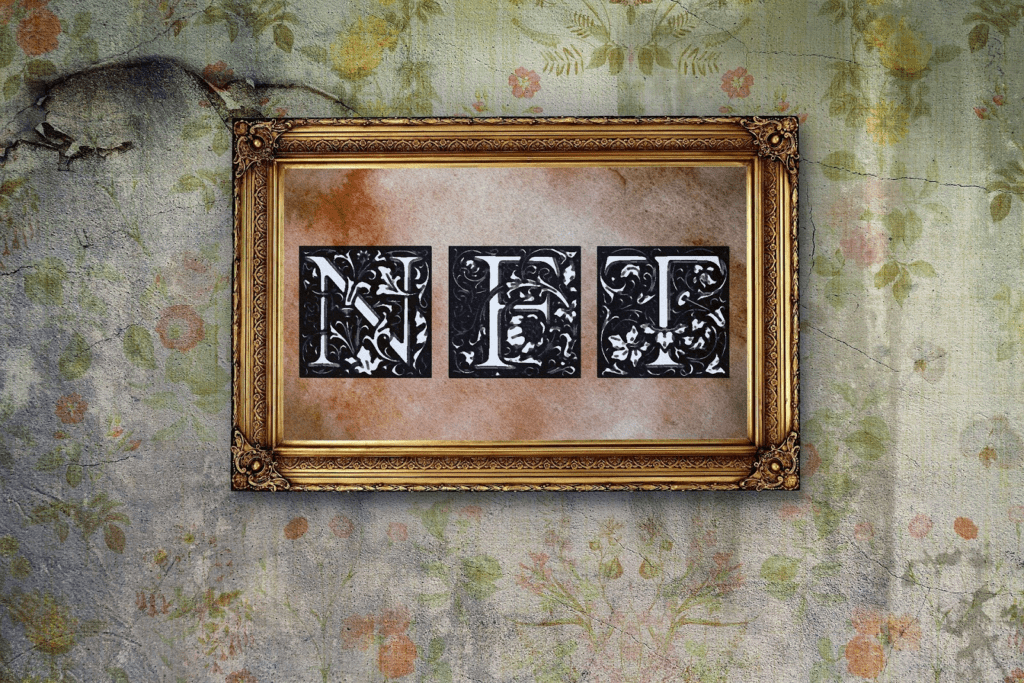
An AI-generated NFT is a non-fungible token created using a neural network. Crafting your authentic piece of art is super easy: enter keywords into the NFT generator. Artificial intelligence will process your request and produce a unique image based on your prompts.
AI algorithms can analyze countless art pieces to generate original content never seen before.
The Debate Around AI Art
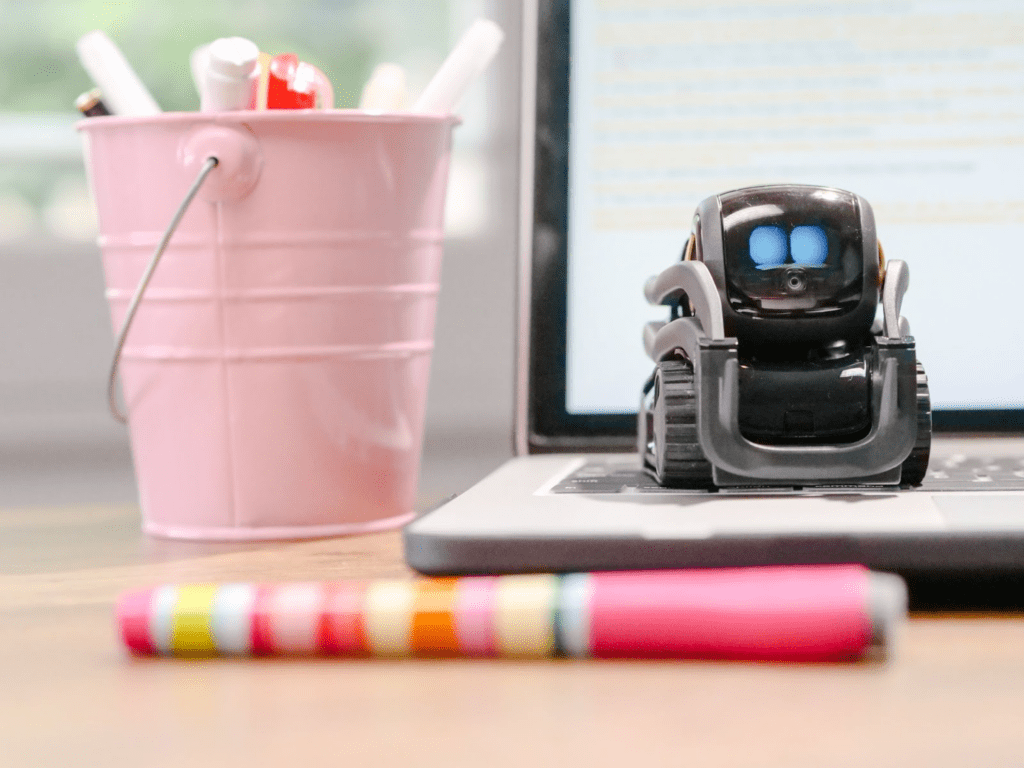
The use of artificial intelligence in art is a controversial topic, and the debate around it doesn’t stop. Does using neural networks equal plagiarizing? Is it ethical to rely on AI when creating art pieces? How to assess the value of AI-generated artwork? Let’s try to figure it out.
Is using AI plagiarism?
Can you treat the output as your original creation when working with neural networks to produce art pieces? Who owns the copyright in the case of AI art — a human, a machine, or both?
According to the US Copyright Office, only human-produced content is eligible for copyright. Thus, entering prompts into an NFT generator isn’t enough to claim authorship. But, if you modify the AI-generated materials significantly, the resulting work may qualify for copyright protection.
Now, does the use of AI equal plagiarism? In most cases, it doesn’t. NFT generators rely on AI algorithms trained on huge data sets to produce unique artworks not seen before. There is no copyright infringement in such cases.
What can constitute plagiarism is training an ML model specifically on the works of a particular author.
Is it ethical to sell AI NFT art pieces?
There are almost no legal obstacles to selling digital collectibles created with neural networks. An exception may be restrictions on using a particular image generator for commercial purposes. But is it ethical to make money from artificial intelligence NFT?
Many critics believe that selling AI NFT is exploitative as such works aren’t real art. That is, AI-generated NFTs lack authenticity, and their authors don’t put enough effort into their creation.
But, if we look at the situation from a different angle, we can treat AI as a tool, such as a brush or paint. The result of the work depends on the prompts entered by the artist in the NFT generator interface. By clearly articulating their unique ideas, NFT enthusiasts are using AI to produce unique and thought-provoking artworks.
In addition, artists can use artificial intelligence as a collaborator throughout the entire creative process. By manipulating the generated images in their own way, a creator can bring their authentic vision of the subject.
How to determine the price of AI-generated NFTs?
There are no generally accepted criteria that can help determine the value of NFTs. Many factors can influence the price of digital collectibles, such as:
- Demand for a work of art
- The reputation of the author
- Marketing around a non-fungible token
When creating an NFT token, the author sets the initial price in the cryptocurrency of the chosen network. It’s possible to choose between an auction and a fixed-price model.
Based on the market demand, the NFT price may rise or fall. Interest expressed by some well-known media person can dramatically increase the price of the artwork.
Types of AI-Generated NFT
The NFT market features creations from thousands of artists practicing various styles. Let’s look through some of the most popular NFT art movements.
Photorealistic NFTs
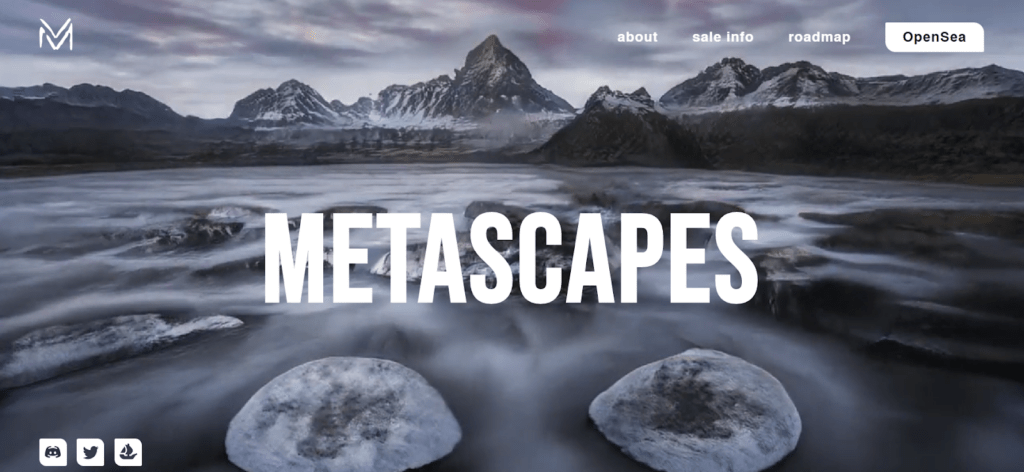
Photorealism is an art movement that strives to create highly detailed images that are indistinguishable from photographs. Metascapes, for example, features a stunning collection of AI-generated NFTs that look amazingly photorealistic.
Surreal and abstract NFTs

Surrealism in art is notable for the use of allusions and paradoxical combinations of objects and forms. With abstractionism, artists prefer shapes, lines, and colors to real-life objects.
The Surreals collection of 10,000 generative images is a noteworthy example of a surrealistic style. For abstract NFTs, check Digital Art by Crypto Taylor.
PFP NFTs
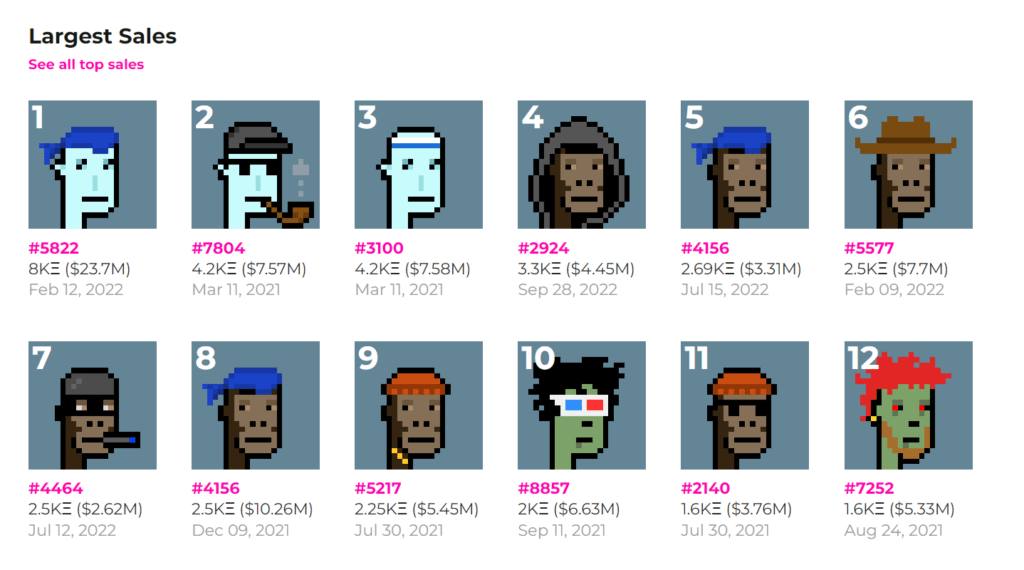
A profile picture non-fungible token or PFP NFT is an artwork that serves as an avatar of the owner or collector. Holders of such NFTs often use them as the profile photo of their social media accounts.
The CryptoPunks project has pioneered the PFP NFT market. Today, the CryptoPunks collection comprises about 10,000 pixelated avatars with unique styles.
Another well-known project in this area is the Bored Ape Yacht Club (BAYC), with monkeys as the main avatar character.
Theme-centered NFTs
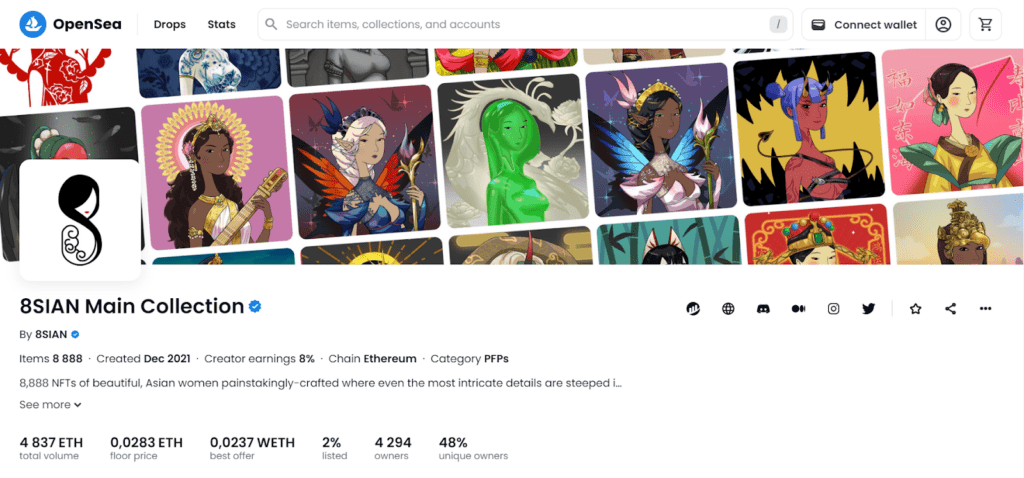
NFT artists often play with certain themes in their works. The topics can cover literally everything — from the role of women in the modern world to the zombie apocalypse.
3D NFTs
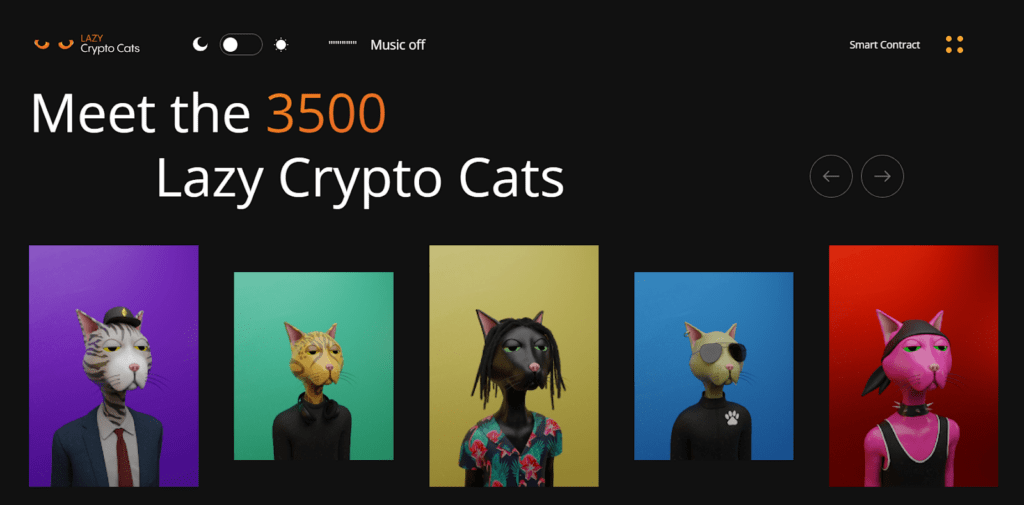
3D NFTs are non-fungible tokens formatted as a 3D animation or model. 3D ensures depth perception similar to a real object.
An artist may combine 3D with other styles, such as animated art or realism.
Pixelated NFTs
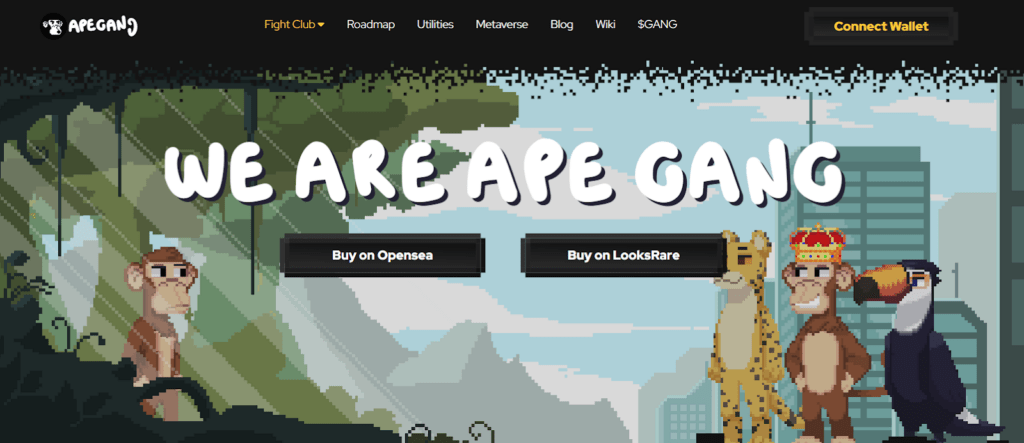
In pixelated art style, individual pixels serve as the building blocks that make up an image. Used in the past as a necessary measure, pixel graphics today give a nice retro look to artworks.
Some of the most popular pixel art NFT collections are Crypto Punks, Meebits, and Ape Gang.
How Much Money Can Generated AI NFTs Bring You?
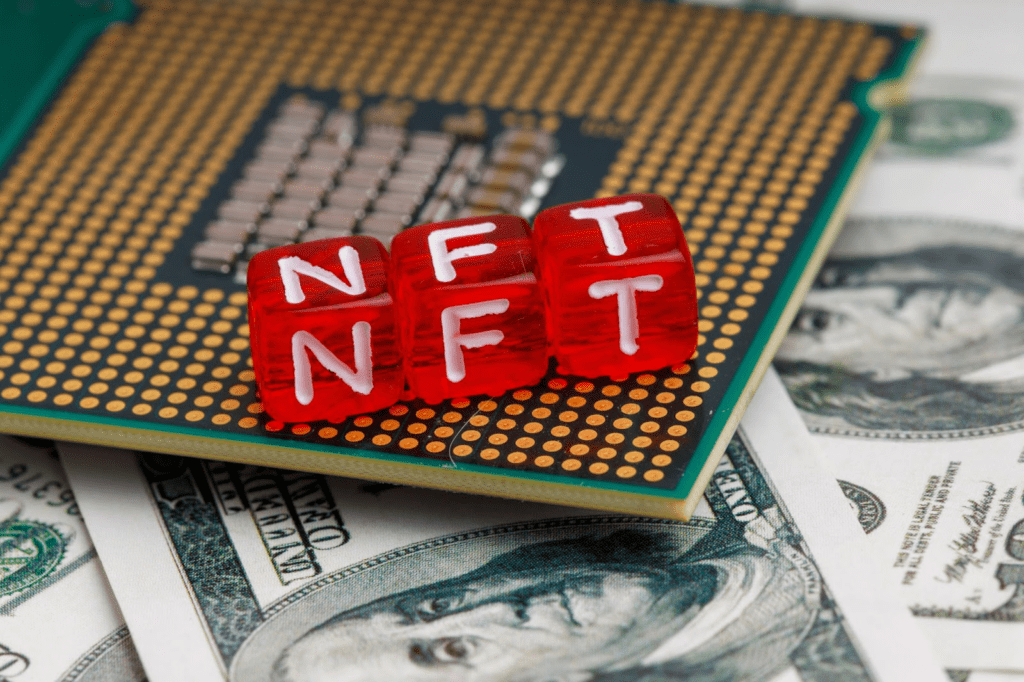
Wondering if artificial intelligence NFT can sell well? Here are some examples of successful collections that will surely inspire you.
Botto
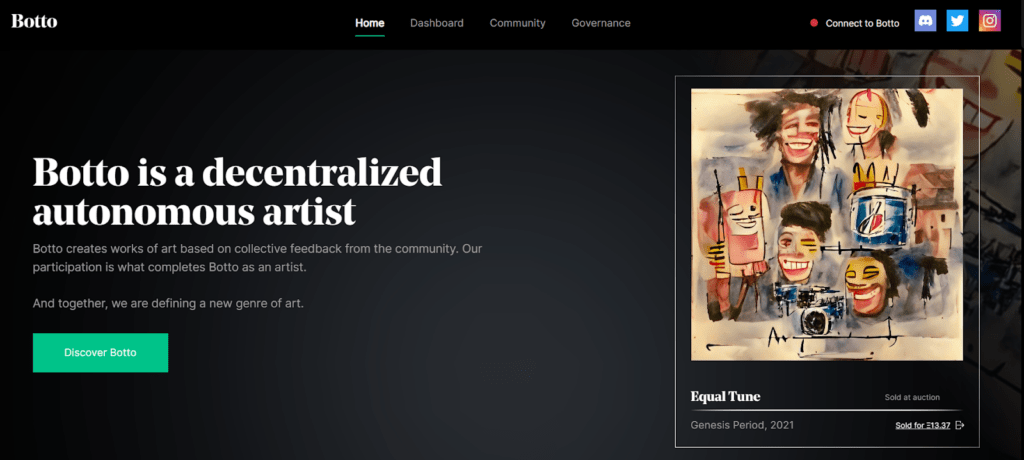
Botto’s AI algorithm has earned about $1.3 million by selling 6 art pieces at an NFT auction. Powered by the VQGAN neural network architecture and CLIP model, Botto reimagines the styles of renowned artists such as Van Gogh and Monet. The community evaluates the produced digital paintings and selects the winners that will become NFTs going to auction.
Obvious
Paris-based art collective Obvious made headlines when they sold an AI-assisted portrait called “Portrait of Edmond de Belamy” for $432,500 at Christie’s. This painting was the first artificially created painting ever sold at auction. To produce this artwork, the team trained a machine learning algorithm on a dataset of 15,000 works from the 14th to 20th centuries.
Claire Silver
Claire Silver is an NFT artist known for collaborating with AI to produce artwork. Claire’s unique style is a mixture of classic painting and artificial intelligence. For select digital paintings, the artist creates physical twins so that the works can exist in two worlds.
The value of Silver’s artworks reached 30 ETH at auctions. One of the best-selling pieces from the Genesis NFT collection has earned Claire 52 ETH.
5 Best AI NFT Generator Tools
You need a powerful NFT generator for art pieces to create a worthy digital collectible. Finding the right software solution might be challenging if you’re new to AI artwork creation. So, what tools can be helpful in NFT AI art creation?
StarryAI
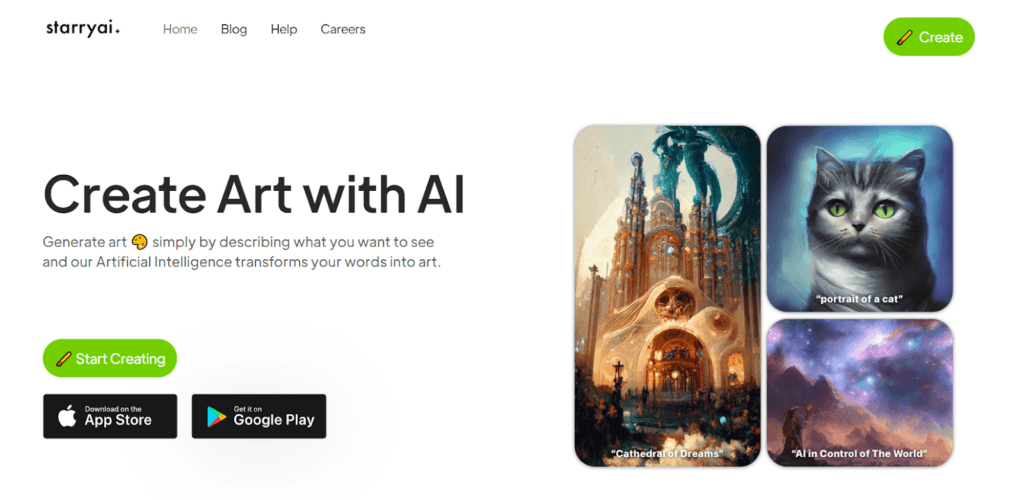
StarryAI is an easy-to-use AI art generator. The platform grants users full ownership of produced images.
To create your masterpiece, you need to enter your instructions into a designated field. When building your prompt, you can choose from over 100 styles to mimic. The AI helper will then transform your text prompt into an artwork.
Once you sign up for StarryAI, you’ll get 5 credits enabling you to generate 25 images for free. Paid plans start at $11.99 per month.
NightCafe
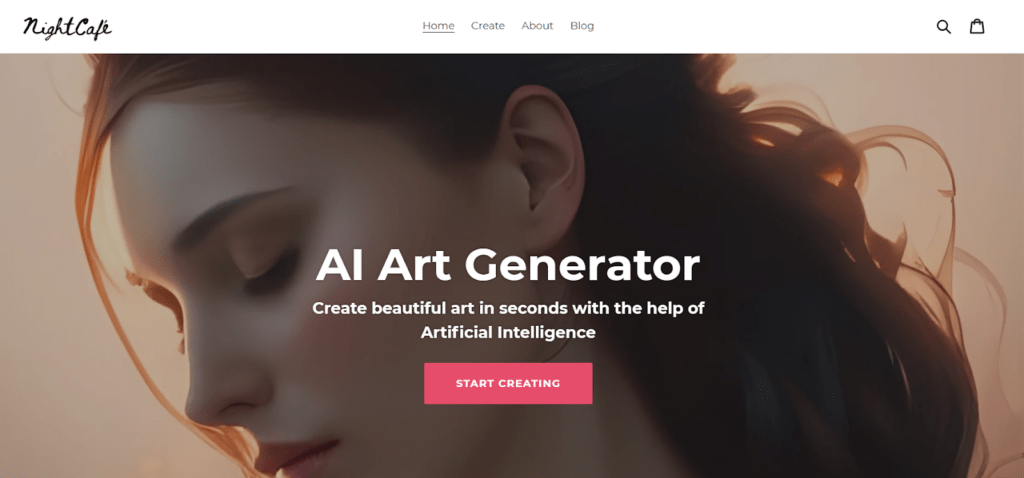
NightCafe is probably the quickest NFT generator for art pieces to get started with. There is no need to register on the website. Once you hit the “Create” button, the platform opens a temporary account with 4 free credits for you. To generate an image, you’ll need to enter a text prompt and choose a style to stick with.
For as little as $5.99, you can upgrade to the PRO version and get 100 credits per month. In addition, there are numerous options to earn credits for participating in the community.
DeepAI
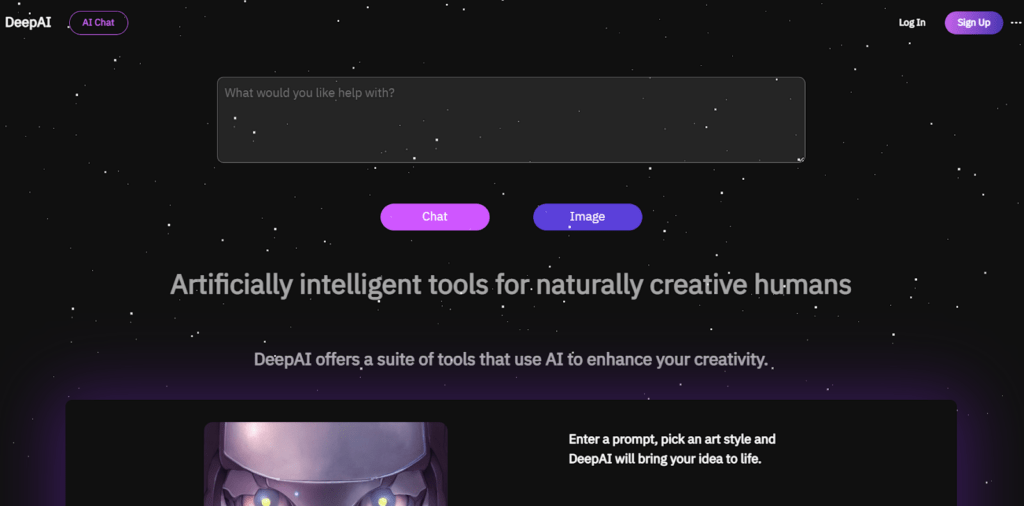
DeepAI is an open-source AI-powered tool to generate artwork from text prompts. Along with creating images from scratch, you can modify the existing ones.
DeepAI offers a $4.99/month plan with 500 images included and a pay-as-you-go plan with $5 per 100 API calls.
DALL-E 2
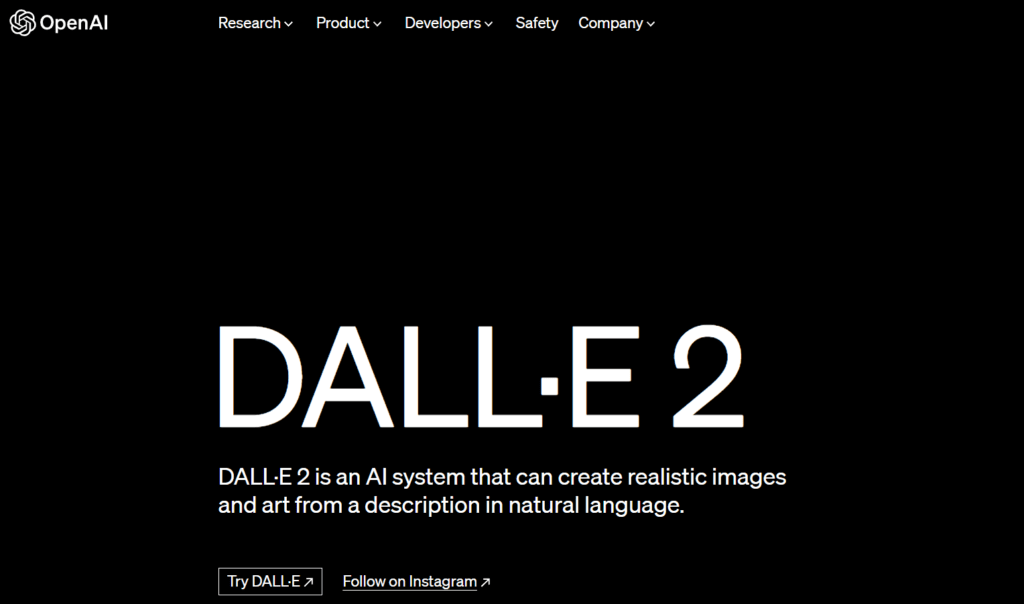
DALL-E 2 is a powerful AI image generator by OpenAI. It is capable of creating unique photorealistic images based on text prompts. The platform also supports uploading custom images and editing them. For each prompt entered, DALL-E 2 generates 4 different outputs.
DALL-E 2 gives users 50 free credits for the first month and 15 credits every month thereafter. You can purchase extra credits as needed; a package of 115 credits will cost you $15.
Fotor
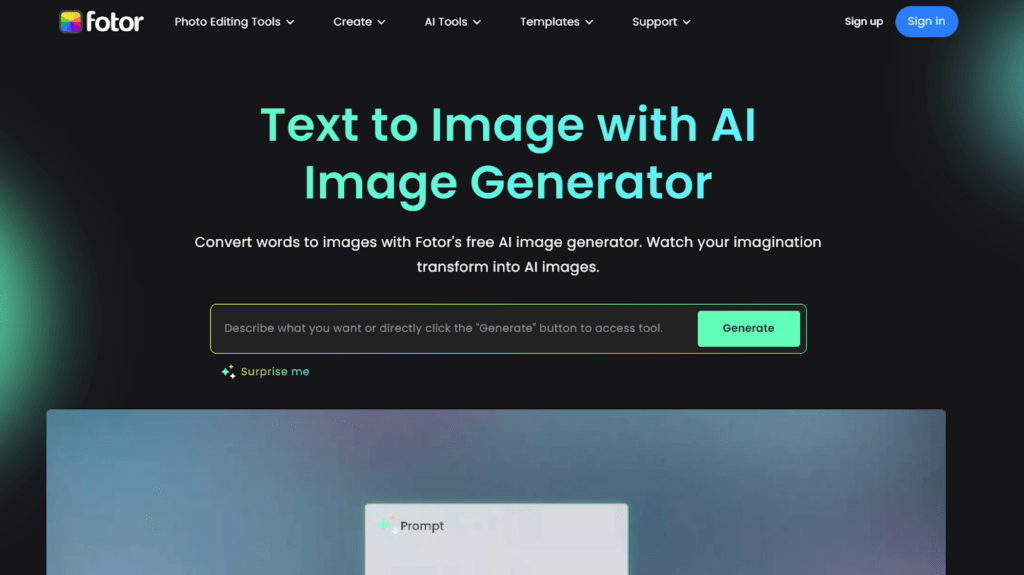
Fotor is famous for its robust photo editing features. Notably, the platform has introduced a range of AI tools, including an AI image generator and an AI art generator.
Fotor’s user-friendly interface enables you to create artwork in a matter of clicks. You can generate NFT AI pieces based on text prompts and existing images.
Signing up for Fotor will give you 5 free credits. Two hundred monthly credits will cost you $9.99.
How To Sell Your AI-Generated NFTs: A Step-By-Step Guide
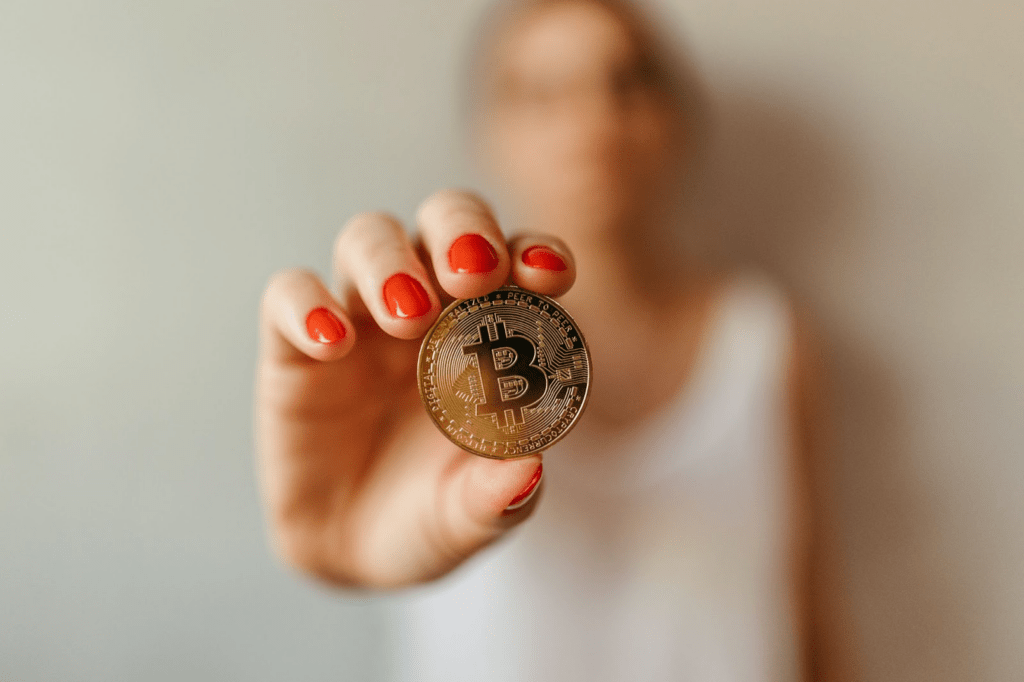
Now, the exciting part: how to monetize your AI-generated NFTs? Here are 6 simple steps to selling NFTs through marketplaces.
Pick a marketplace
When selecting an NFT marketplace, it’s essential to distinguish between curated and non-curated platforms.
Non-curated marketplaces allow anyone to create an NFT and put it up for sale. The most famous examples of non-curated platforms are Opensea and Rarible. Note that these marketplaces host a huge variety of digital collectibles, leaving few chances for your offer to get noticed. Thus, you need to think of additional ways to promote your artwork.
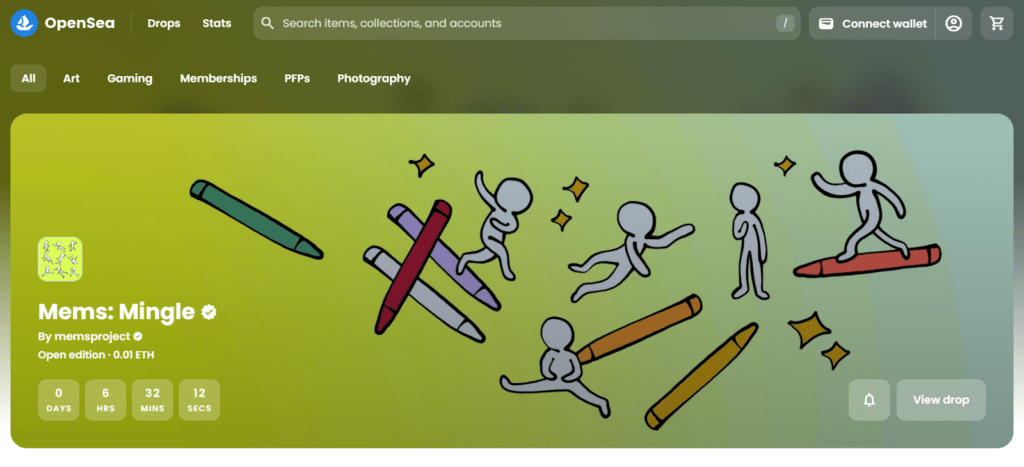
Curated marketplaces have stricter quality control in place. NFT artists need to get approval from a platform before listing their works there. The most famous examples of curated marketplaces are Foundation, Makersplace, and Knoworigin.
Set up a crypto wallet
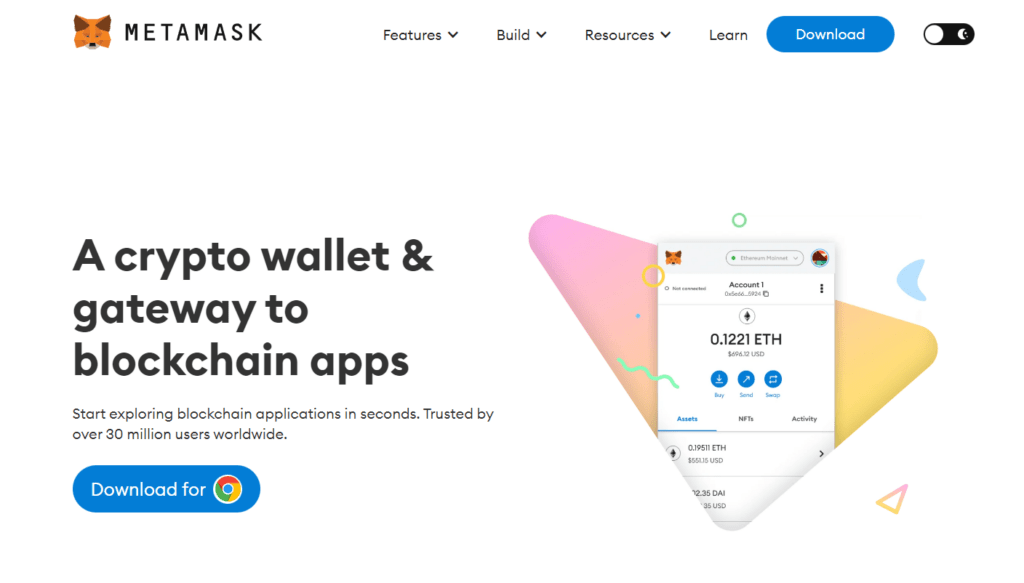
Next, you need to create a crypto wallet with which you will link your NFT Marketplace account. To work with NFTs on the Ethereum network, consider the MetaMask wallet.
After registering a wallet, be sure to store your seed phrase securely. You will need the seed phrase to access your wallet from a new device or in another browser.
Sign up for a marketplace
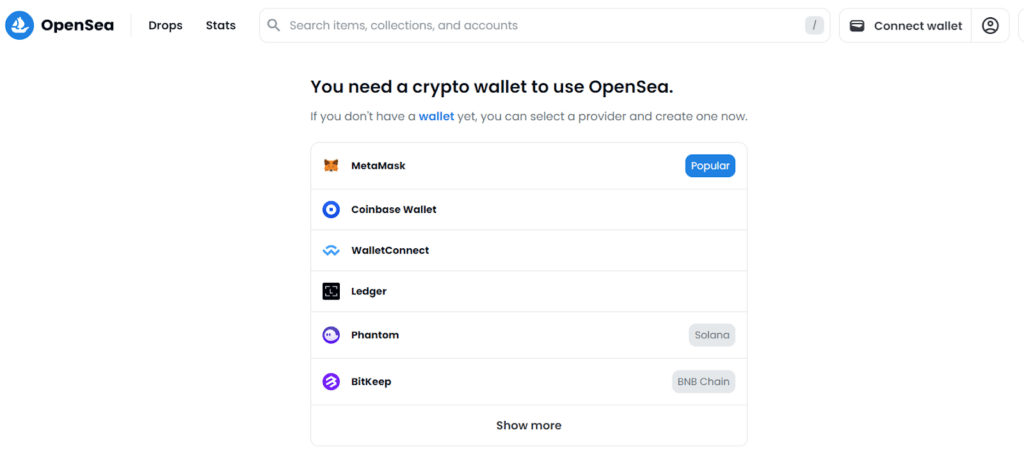
Once you have your crypto wallet set up, you can use its login credentials to register on the marketplace of your choice. Next, you’ll need to fill out your profile by entering your personal data and telling a bit about yourself.
Create a non-fungible token
To list your NFT on the marketplace, you will need to complete the following steps (the procedure may vary slightly across platforms):
- Upload a file of the required size and format
- Add asset description
- Select blockchain network (the Ethereum network involves gas fees while Polygon doesn’t)
- Hit the “Create” button.
Set up a sales mechanism
Next, you need to select a price model for your offer. Generally, there are three ways to sell NFTs:
Promote your NFT AI art piece
To successfully sell NFTs, you need to develop a personal brand and build the community around it. A good practice is to start promoting your artwork way before the release.
Successful NFT artists often share the process of creating a masterpiece with their community. Interested followers often buy the most anticipated works in the first hours after the release.
Bottom Line
AI NFT is an exciting innovation in the world of art and technology. By using neural networks, artists can produce unique works and turn them into income-generating NFTs.
Becoming a successful NFT artist is not as easy as it might seem. You’ll need to build your brand and drive awareness for your artwork, which takes time and effort.
We hope our guide will inspire you to try your hand at NFT. With such a reliable assistant as artificial intelligence, you can create masterpieces worthy of the attention of art lovers.
